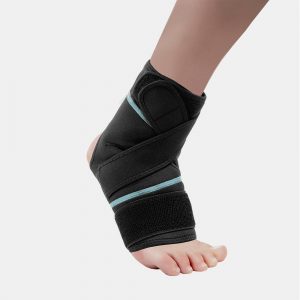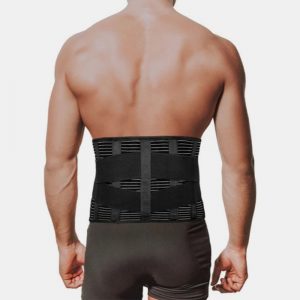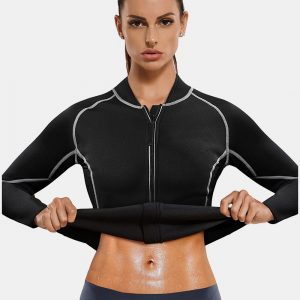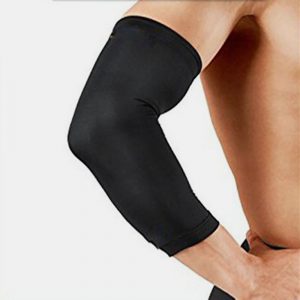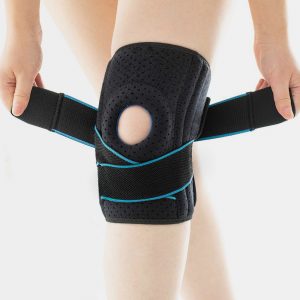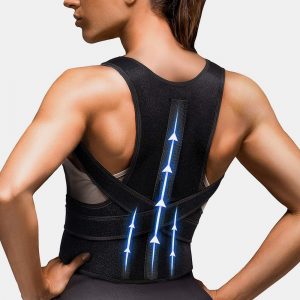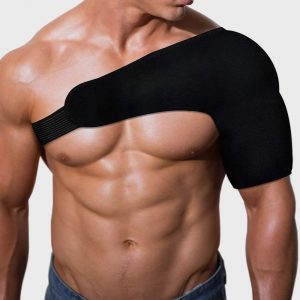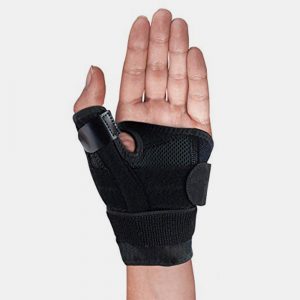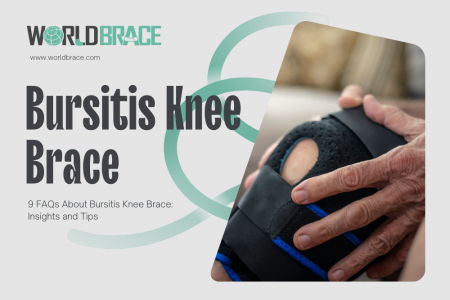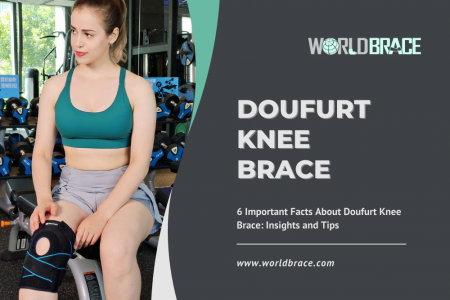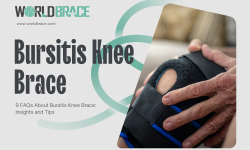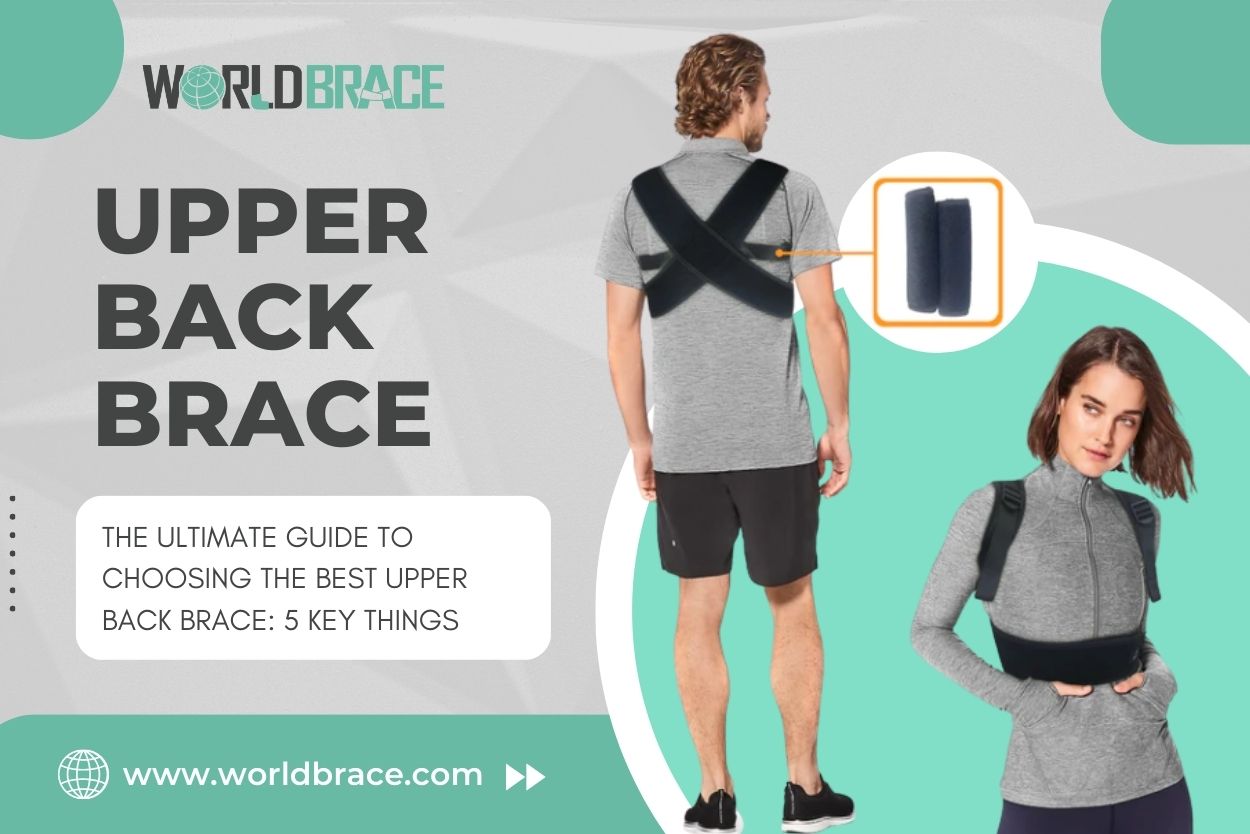
Understanding Upper Back Pain
Various factors, including poor posture, muscle strain or injury, and spinal abnormalities, can cause upper back pain. Symptoms can range from mild discomfort to sharp, debilitating pain. Pain in the upper back can also lead to headaches, shoulder pain, and difficulty with movement. An upper back brace can help alleviate pain by providing support and stabilization to the affected area. An upper back brace can reduce muscle strain and help prevent further injury by restricting movement and promoting proper posture.
Types of Upper Back Braces
When it comes to upper back braces, there are several different types available on the market. Some of the most common types include:
- Posture Correctors: These help improve posture by pulling the shoulders back and aligning the spine. They are often lightweight and can be worn discreetly under clothing.
- Support Braces: These are designed to provide extra support to the upper back and shoulder area, particularly for those who have suffered an injury or chronic pain. They are often made of more heavy-duty materials and may be bulkier than posture correctors.
- Compression Brace: Compression braces provide pressure and support to the upper back muscles, reducing pain and inflammation.
- Thoracic Support Brace: This type of brace supports the thoracic spine, the upper part of the spine that connects to the ribcage. It helps to correct postural imbalances and improve spinal alignment.
- Shoulder Brace: A shoulder brace supports the shoulder joint and surrounding muscles, which can help alleviate upper back pain caused by shoulder injuries.
Who Needs Upper Back Braces
Upper back braces are not only for people with existing back problems but can also be useful for individuals at risk of developing them. Here are some examples of people who might benefit from wearing an upper back brace:
- Office Workers: If you spend long hours in front of a computer, you might develop poor posture or hunched shoulders, leading to upper back pain.
- Athletes: High-impact sports such as football, basketball, or weightlifting can strain the upper back muscles, leading to injury.
- People with Osteoporosis: As people age, their bones become more brittle and fragile, and their upper back becomes more vulnerable to fractures.
- Individuals with Scoliosis: Scoliosis is a medical condition that causes the spine to curve abnormally, leading to upper back pain.
- Individuals with Herniated Discs: A herniated disc occurs when the soft tissue between the vertebrae in the spine pushes out, leading to nerve compression and upper back pain.
Considerations When Choosing an Upper Back Brace
- Type of brace: There are different upper back braces, including posture correctors, compression braces, and immobilization braces. It’s important to choose the type that best fits your needs.
- Size and fit: Choosing a brace that fits your body properly is essential. Measure your upper body and refer to the manufacturer’s sizing chart to find the best fit.
- Material: The material of the brace can affect its durability, breathability, and comfort. Consider your individual needs and preferences when selecting a material.
- Level of support: Some upper back braces provide more support than others. Consider the level of support you need based on your condition and daily activities.
- Comfort: You’ll likely be wearing your upper back brace for extended periods, so choosing one that is comfortable to wear is important. Look for padding, adjustable straps, and breathable fabric to ensure maximum comfort.
How to Use and Maintain Your Upper Back Brace
Proper usage and maintenance of your upper back brace are essential to ensure it provides the desired benefits for your posture and pain relief. To use your upper back brace effectively, follow the instructions provided by the manufacturer. Generally, you must adjust the brace straps to ensure a snug fit that supports your upper back and shoulders.
As for maintenance, clean your upper back brace regularly to prevent the buildup of sweat and bacteria. Follow the care instructions provided by the manufacturer, but generally, you can clean the brace with mild soap and water and air dry it. Avoid using harsh chemicals or machine washing the brace, which can damage the materials and reduce effectiveness.
Inspecting your upper back brace periodically is also important to ensure it is still in good condition and functioning properly. If you notice any signs of wear and tear, such as frayed straps or weakened support, it’s time to replace your brace. By following these tips for usage and maintenance, you can ensure that your upper back brace provides the best possible support and pain relief for longer.
Conclusion:
In conclusion, choosing the best upper back brace requires careful consideration of your specific needs and the features of the brace. The right brace can provide the necessary support and alignment to alleviate pain and improve posture. When choosing an upper back brace, consider factors such as the material, adjustability, breathability, and level of support. Using the six key factors outlined in this guide, you can make an informed decision and select the best upper back brace for your needs.
Looking for the best upper back brace? Check out our selection at WorldBrace, a leading manufacturer and supplier in China. We offer high-quality braces at wholesale prices to provide the support you need.

